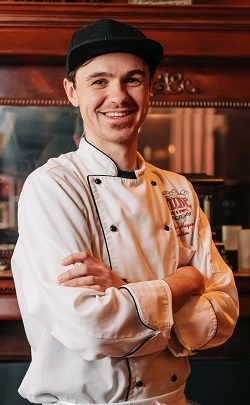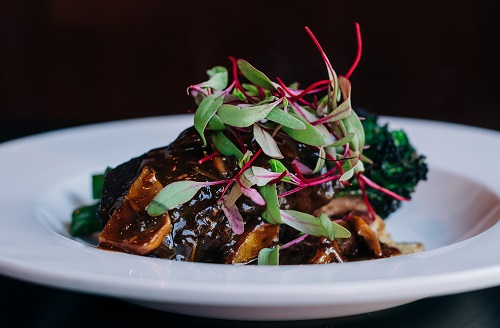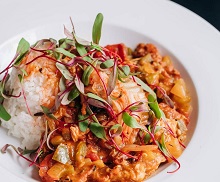Article by Michael Rainville, Jr.
Spanning over 180 acres, Columbia Park along Central Avenue in Northeast Minneapolis has been an indispensable feature to the city for almost 130 years. The surrounding communities enjoy amenities such as a dog park, archery range and an 18-hole golf course, but over the course of its long history, major changes have taken place. Today we will look at how the park has transformed throughout the years.
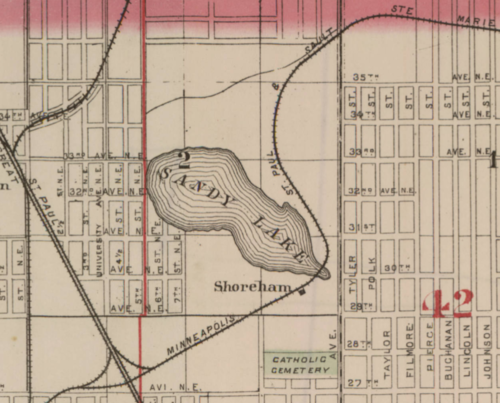 Section of a map from 1898 that shows Sandy Lake
Section of a map from 1898 that shows Sandy Lake
In 1892, the Minneapolis Park and Recreation Board made plans to create an ice rink on Sandy Lake for the coming winter season. During this time, land was being plotted and people were moving in, so the park board decided to purchase 144 acres, including the majority of the 40-acre Sandy Lake. The price was high, coming in at $208,000, or over $6,000,000 after inflation. Many park commissioners were in favor of acquiring the land but were still hesitant. In order to show their enthusiasm for a very large new park, the neighbors petitioned the park board to approve their purchase plans, and the sellers put $20,000 of their own money on the table for immediate parkland improvements.
The park board officially acquired the land in December of 1892, 400 years after Christopher Columbus became the second recorded European to lead a crew to the Americas, thus Columbia Park was born. The acquisition of this park also rekindled the idea of having a parkway encircle Minneapolis, the Grand Rounds. The next summer, following the success of the ice rink on Sandy Lake, a bandstand was erected in the park for seasonal entertainment. Various ideas were thrown around for what to do with all this land, such as putting in an arboretum, a nice resort, athletic fields or a golf course, but in the meantime, the lowland areas of the park were used to grow hay. Over the next decade and a half, the park expanded by another thirty-one acres.
Sandy Lake, thought to be spring fed, began to retreat during the early years of the park. By 1910, the lake was only filled during the wet season and even then, it was more of a pond with marshland surrounding it than a lake. In 1914, the City of Minneapolis was installing storm sewers in that part of Northeast, so superintendent Theodore Wirth talked them into putting in the sewer at a level that would drain the lake. Since then, the lowlands of Columbia Park have had flooding issues in the Spring from time to time.
With more land at their dispense, the park board was ready to connect Columbia Park to the Grand Rounds. In 1912, a plan was made for the Northeast stretch of the Grand Rounds and two years later, Thirty-third Avenue was renamed “St. Anthony Parkway” from University to the Camden Bridge. This Northeast section was completed in 1924 and inaugurated with a parade. It became the first east-west route north of Lowry Avenue.
 Photo from 1925 of the clubhouse under construction
Photo from 1925 of the clubhouse under construction
The 18-hole golf course in Columbia Park looked a little different when it first opened. With the success of the 9-hole course at Glenwood Park, now known as Wirth, the park board installed six holes with sand putting greens at Columbia in 1917. Three years later, they put in three more holes, and two years after that in 1922, nine holes were added to make eighteen with the sand greens being replaced by grass. The new 18-hole course quickly became a must-play for local golfers, but there was not a system in place to handle the high demand. In order to cater to the needs of a popular course, the park board constructed a clubhouse in 1925 that would later be named “The Manor” in 1930.
 Wirth's 1930 park plans
Wirth's 1930 park plans
That same year, superintendent Wirth created a plan to connect Columbia Parkway, that runs along the northern edge of the park, to Thirty-third Avenue next to the clubhouse. This plan included a large picnic shelter, many athletic fields, and an indoor swimming pool situated along Central Avenue. This new road would wind its way between the recreational parkland and golf course, crossing the Soo Line Railway tracks at the Columbia Park Bridge that was installed in 1895. This bridge is only one of two steel, ribbed-arch bridges in Minnesota, was closed to vehicle traffic in 1958, and currently connects holes two and three at the golf course. The Great Depression immediately halted Wirth’s 1930 plan and it never came to fruition.
 Women's golf national champion Patty Berg playing an exhibtion match, 1940.
Women's golf national champion Patty Berg playing an exhibtion match, 1940.
 A shoe race on the 4th of July at the park, 1947.
A shoe race on the 4th of July at the park, 1947.
In 1956, the Northeast Lions Club paid for the park’s first picnic shelter, which was the first of many in the park system to have coin-operated electric outlets and hotplates. In the late 1960s, the golf course was expanded in order to stay competitive from roughly 4,600 total yards to 6,200 yards. Cross-country skiing and snowshoeing were also become popular activities and the golf course began manicuring trails in the winter. In the 1990s, Columbia Park became home to the park system’s first golf learning center, across the parkway from the dog park. The next major upgrade came in 1997 when the park installed a new playground with a very fun but dangerously long slide, updated paths, volleyball and basketball courts, and a soccer/rugby field that has became a popular spot for rugby clubs around the Twin Cities.
More recently, the park board and the Mississippi Watershed Management Organization are working to mitigate flooding and improve the ecosystem of the park. The first phase of this project, which started in October of 2020, includes replacing the storm sewer system along with controlled burnings and trimmings of sections of the park for a total of twenty acres with the intent of planting native prairie vegetation and oak savannahs. Phase two, which is scheduled to begin in May of 2021, includes grading and reseeding the golf course. The work that is being done will greatly enhance the experience for its visitors, human and animal alike, and I soon look forward to walking the greens of Columbia Park when improvements are complete.
- - - - - - - - - - - - - - - - - - - - - - - - - -
Click here for an interactive map of Michael's past articles.
 Thursday, December 8, 2022 at 5:33PM |
Thursday, December 8, 2022 at 5:33PM |  Kim Eslinger |
Kim Eslinger |  The City of Minneapolis’ Public Works Department is looking for people to join the teams that keep the city running. Help spread the word about these opportunities with friends, family and community.
The City of Minneapolis’ Public Works Department is looking for people to join the teams that keep the city running. Help spread the word about these opportunities with friends, family and community.






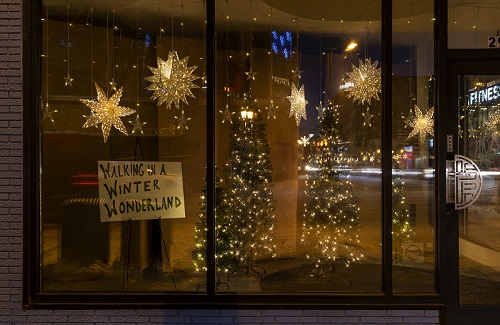



























 Allison Johanson – Painting
Allison Johanson – Painting Stacey Johnson – Jewelry
Stacey Johnson – Jewelry

 Bob Tema - Painting
Bob Tema - Painting Steve Hemingway – Ceramics
Steve Hemingway – Ceramics Lynne Sarnoff-Christensen – Ceramics
Lynne Sarnoff-Christensen – Ceramics Jodi Reeb – Encaustic painting
Jodi Reeb – Encaustic painting












